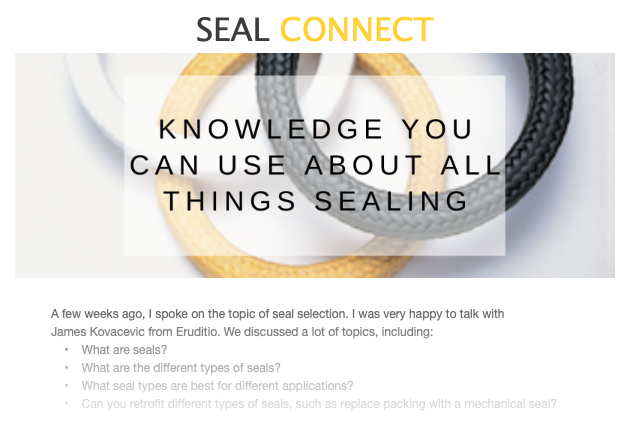Industry Podcast Discusses Choosing the Correct Seal for Your Application
You likely know that seals are crucial in containing machine fluids and preventing contamination. And there are different types of seals in the market such as traditional packing, mechanical seals, air seals, and other seals that keep bearing hoses working properly. But do you know which type of seal to use in particular industry applications?
A 2019 “Rooted in Reliability” podcast welcomed SEPCO’s director of market development, Chuck Tanner, to the mic to discuss the different types of seals, their best applications, and if retrofitting is possible.
Traditional Packing Vs. Mechanical Seals
“Traditional packing is one of the cheapest sealing solutions out there in the market,” Tanner discussed in the podcast and in the blog post about this episode of “Rooted in Reliability. “The only difference between a mechanical seal and packing is that the mechanical seals work very well for the rotating piece of equipment. They give precision and accuracy where is needed as compared to the traditional packing where there are a lot more chances of errors while holding the fluids in.”
According to Tanner, you can pick one of these based on costs and ROI from their usage. Mechanical seals run longer than packing, but the choice should be made depending upon the use and lifetime that you want from your piece of equipment.

Air seals, on the other hand, are cost-effective and use advanced technology. Their biggest advantage? They work well with rotating shafts.
What Are the Limitations?
“Air seal technology uses a throttle system that creates a non-contact air pad around the shaft and keeps the process fluids inside the piece of equipment.” Tanner discussed. “It doesn’t touch the shaft and has a much more distance capacity than other types of seals. So, basically, it reduces the radio movement of the shaft that causes a lot of problems in the long run. The seals can be switched as well but you need to make sure that your stuffing box has that kind of flexibility in there.”
Of course, the main purpose of using seals on rotating equipment is to reduce the initial cost of fixing the equipment and handle the lifecycle cost of the asset.

“The operating cost of the asset can be highly affected by the operating conditions as well,” Tanner said. “So, the operations people should be trained in such a way that they know the consequences of using the wrong type of seal. Their insights in the selection of the seal are vital from a technical standpoint. They are the ones who are working on the equipment.”
There are other factors that contribute to the selection of a seal.
The key to having a successful seal implementation is the maintenance and basic care of the product that you have installed into your equipment.
Read the complete blog post on HP Reliability’s website and listen to the full conversation in this “Rooted in Reliability” podcast episode.
 SEAL CONNECT
SEAL CONNECT Find Your Sealing Solution
Find Your Sealing Solution